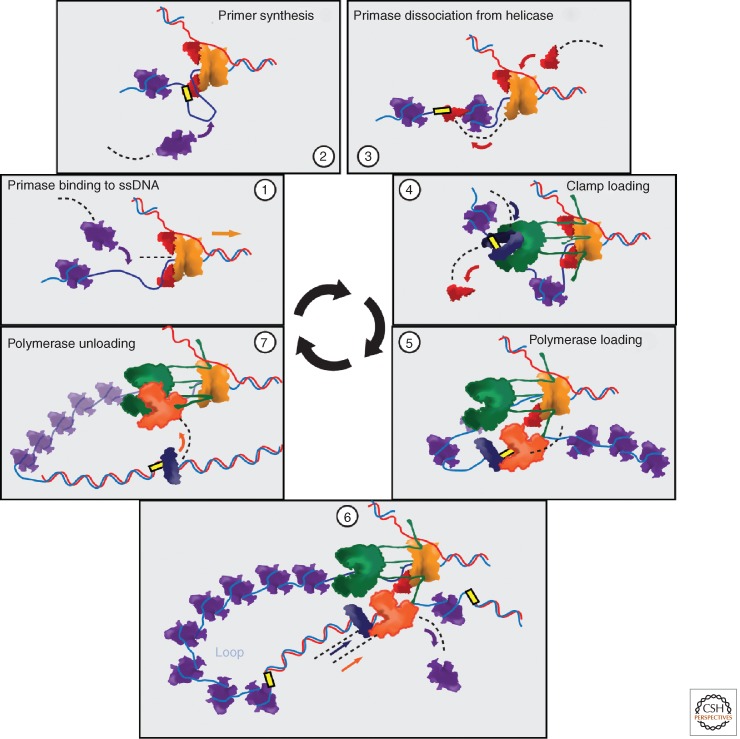Figure 5.
Replisome dynamics. The major source of molecular exchange during replication is produced during the synthesis of the lagging strand. Primase binds to ssDNA (1) and produces a primer forming a short loop in the process (2). The primase then dissociates from helicase, possibly remaining bound to the primer (3). Loading of β-clamp displaces the primase (4) and recruits one of the idle polymerase in the replisome (5). Polymerase elongates the chain causing the growth of a DNA loop (6). Finally, the lagging-strand polymerase detaches from the β-clamp and causes the release of the DNA loop, while the clamp remains bound to DNA (7). For simplicity, only the collision mechanism for loop release is depicted. SSB, β-clamp, primase, and likely polymerase (during loop release, not shown here) are exchanged with the diffusing pool of proteins in the cytoplasm at different stages of the cycle. For clarity, only a part of the replisome is represented in the different steps.

